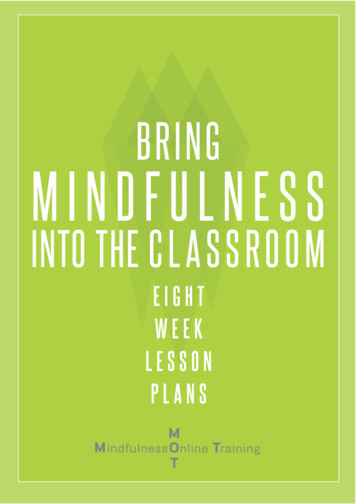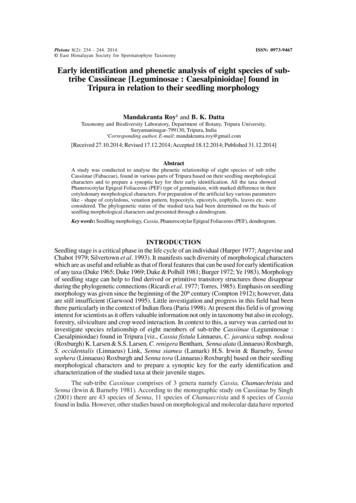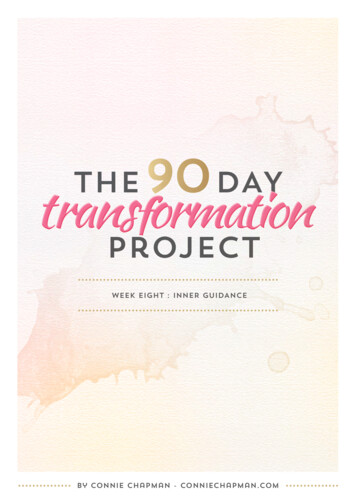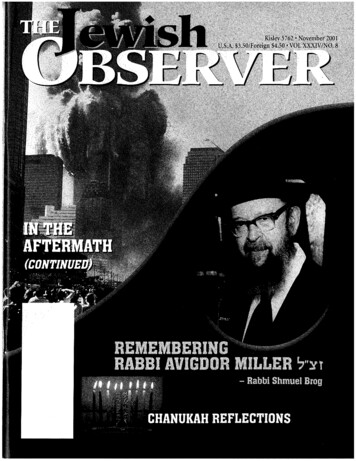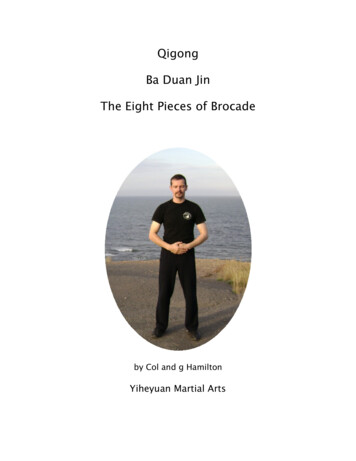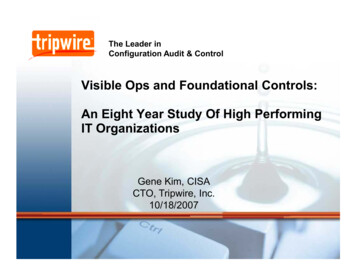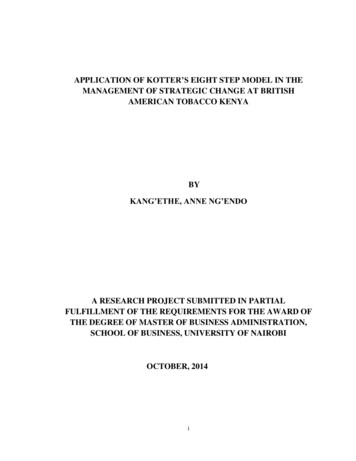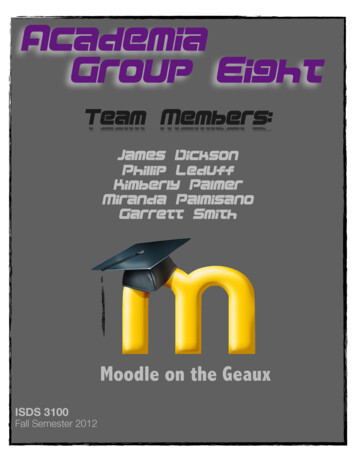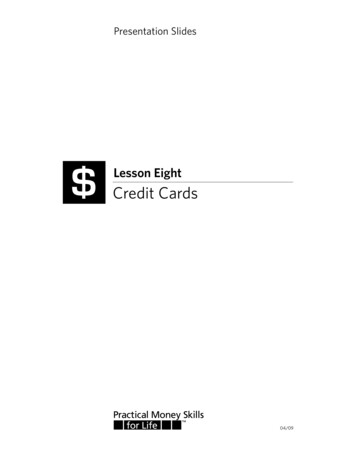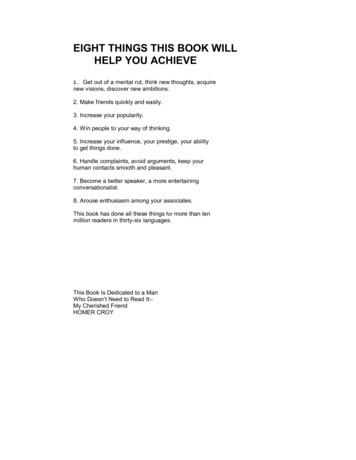
Transcription
EIGHT THINGS THIS BOOK WILLHELP YOU ACHIEVE1. Get out of a mental rut, think new thoughts, acquirenew visions, discover new ambitions.2. Make friends quickly and easily.3. Increase your popularity.4. Win people to your way of thinking.5. Increase your influence, your prestige, your abilityto get things done.6. Handle complaints, avoid arguments, keep yourhuman contacts smooth and pleasant.7. Become a better speaker, a more entertainingconversationalist.8. Arouse enthusiasm among your associates.This book has done all these things for more than tenmillion readers in thirty-six languages.This Book Is Dedicated to a ManWho Doesn’t Need to Read It:My Cherished FriendHOMER CROY
HOW TOWin FriendsANDInfluencePeopleREVISED EDITIONDale CarnegieEditorial Consultant: Dorothy CarnegieEditorial Assistance: Arthur R. Pell, Ph.D.SIMON AND SCHUSTERNEW YORKCopyright 1936 by Dale Carnegie, copyright renewed 1964by Donna Dale Carnegie and Dorothy CarnegieRevised Edition copyright 1981 by Donna Dale Carnegie andDorothy CarnegieAll rights reservedincluding the right of reproductionin whole or in part in any formPublished by Simon and SchusterA Division of Gulf & Western CorporationSimon & Schuster BuildingRockefeller Center1230 Avenue of the AmericasNew York, New York 10020SIMON AND SCHUSTER and colophon are trademarks of Simon & SchusterDesigned by Stanley S. DrateManufactured in the United States of America17 19 20 18Library of Congress Cataloging in Publication DataCarnegie, Dale, 1888-1955.How to win friends and influence people.
BF637.S8C371981158’. 1Includes index.1. Success. I. Title.80-28759ISBN O-671-42517-X
Prefaceto Revised EditionHow to Win Friends and Influence People was first publishedin 1937 in an edition of only five thousand copies.Neither Dale Carnegie nor the publishers, Simon andSchuster, anticipated more than this modest sale. Totheir amazement, the book became an overnight sensation,and edition after edition rolled off the presses tokeep up with the increasing public demand. Now to WinFriends and InfEuence People took its place in publishinghistory as one of the all-time international best-sellers.It touched a nerve and filled a human need that wasmore than a faddish phenomenon of post-Depressiondays, as evidenced by its continued and uninterruptedsales into the eighties, almost half a century later.Dale Carnegie used to say that it was easier to make amillion dollars than to put a phrase into the English language.How to Win Friends and Influence People becamesuch a phrase, quoted, paraphrased, parodied,used in innumerable contexts from political cartoon tonovels. The book itself was translated into almost everyknown written language. Each generation has discoveredit anew and has found it relevant.Which brings us to the logical question: Why revise abook that has proven and continues to prove its vigorousand universal appeal? Why tamper with success?To answer that, we must realize that Dale Carnegiehimself was a tireless reviser of his own work during hislifetime. How to Win Friends and Influence People waswritten to be used as a textbook for his courses in EffectiveSpeaking and Human Relations and is still used inthose courses today. Until his death in 1955 he constantlyimproved and revised the course itself to make itapplicable to the evolving needs of an every-growingpublic. No one was more sensitive to the changing currentsof present-day life than Dale Carnegie. He constantlyimproved and refined his methods of teaching;he updated his book on Effective Speaking severaltimes. Had he lived longer, he himself would have revised
How to Win Friends and Influence People to betterreflect the changes that have taken place in the worldsince the thirties.Many of the names of prominent people in the book,well known at the time of first publication, are no longerrecognized by many of today’s readers. Certain examplesand phrases seem as quaint and dated in our socialclimate as those in a Victorian novel. The important messageand overall impact of the book is weakened to thatextent.Our purpose, therefore, in this revision is to clarifyand strengthen the book for a modern reader withouttampering with the content. We have not “changed”How to Win Friends and Influence People except tomake a few excisions and add a few more contemporaryexamples. The brash, breezy Carnegie style is intact-eventhe thirties slang is still there. Dale Carnegie wroteas he spoke, in an intensively exuberant, colloquial,conversational manner.So his voice still speaks as forcefully as ever, in thebook and in his work. Thousands of people all over theworld are being trained in Carnegie courses in increasingnumbers each year. And other thousands are readingand studying How to Win Friends and lnfluence Peopleand being inspired to use its principles to better theirlives. To all of them, we offer this revision in the spiritof the honing and polishing of a finely made tool.Dorothy Carnegie(Mrs. Dale Carnegie)
How This Book WasWritten-And Whyby Dale CarnegieDuring the first thirty-five years of the twentieth century,the publishing houses of America printed morethan a fifth of a million different books. Most of themwere deadly dull, and many were financial failures.“Many,” did I say? The president of one of the largestpublishing houses in the world confessed to me that hiscompany, after seventy-five years of publishing experience,still lost money on seven out of every eight booksit published.Why, then, did I have the temerity to write anotherbook? And, after I had written it, why should you botherto read it?Fair questions, both; and I'll try to answer them.I have, since 1912, been conducting educationalcourses for business and professional men and womenin New York. At first, I conducted courses in publicspeaking only - courses designed to train adults, by actualexperience, to think on their feet and express theirideas with more clarity, more effectiveness and morepoise, both in business interviews and before groups.But gradually, as the seasons passed, I realized that assorely as these adults needed training in effective speaking,they needed still more training in the fine art ofgetting along with people in everyday business and socialcontacts.I also gradually realized that I was sorely in need ofsuch training myself. As I look back across the years, Iam appalled at my own frequent lack of finesse andunderstanding. How I wish a book such as this had beenplaced in my hands twenty years ago! What a pricelessboon it would have been.
Dealing with people is probably the biggest problemyou face, especially if you are in business. Yes, and thatis also true if you are a housewife, architect or engineer.Research done a few years ago under the auspices of theCarnegie Foundation for the Advancement of Teachinguncovered a most important and significant fact - a factlater confirmed by additional studies made at the CarnegieInstitute of Technology. These investigations revealedthat even in such technical lines as engineering,about 15 percent of one's financial success is due toone’s technical knowledge and about 85 percent is dueto skill in human engineering-to personality and theability to lead people.For many years, I conducted courses each season atthe Engineers’ Club of Philadelphia, and also coursesfor the New York Chapter of the American Institute ofElectrical Engineers. A total of probably more than fifteenhundred engineers have passed through myclasses. They came to me because they had finally realized,after years of observation and experience, that thehighest-paid personnel in engineering are frequentlynot those who know the most about engineering. Onecan for example, hire mere technical ability in engineering,accountancy, architecture or any other professionat nominal salaries. But the person who hastechnical knowledge plus the ability to express ideas, toassume leadership, and to arouse enthusiasm amongpeople-that person is headed for higher earning power.In the heyday of his activity, John D. Rockefeller saidthat “the ability to deal with people is as purchasable acommodity as sugar or coffee.” “And I will pay more forthat ability,” said John D., “than for any other under thesun.”Wouldn’t you suppose that every college in the landwould conduct courses to develop the highest-pricedability under the sun? But if there is just one practical,common-sense course of that kind given for adults ineven one college in the land, it has escaped my attentionup to the present writing.The University of Chicago and the United Y.M.C.A.Schools conducted a survey to determine what adults
want to study.That survey cost 25,000 and took two years. The lastpart of the survey was made in Meriden, Connecticut. Ithad been chosen as a typical American town. Everyadult in Meriden was interviewed and requested to answer156 questions-questions such as “What is yourbusiness or profession? Your education? How do youspend your spare time? What is your income? Your hobbies?Your ambitions? Your problems? What subjects areyou most interested in studying?” And so on. That surveyrevealed that health is the prime interest of adultsand that their second interest is people; how to understandand get along with people; how to make peoplelike you; and how to win others to your way of thinking.So the committee conducting this survey resolved toconduct such a course for adults in Meriden. Theysearched diligently for a practical textbook on the subjectand found-not one. Finally they approached one ofthe world’s outstanding authorities on adult educationand asked him if he knew of any book that met the needsof this group. “No,” he replied, "I know what thoseadults want. But the book they need has never beenwritten.”I knew from experience that this statement was true,for I myself had been searching for years to discover apractical, working handbook on human relations.Since no such book existed, I have tried to write onefor use in my own courses. And here it is. I hope youlike it.In preparation for this book, I read everything that Icould find on the subject- everything from newspapercolumns, magazine articles, records of the family courts,the writings of the old philosophers and the newpsychologists. In addition, I hired a trained researcher tospend one and a half years in various libraries readingeverything I had missed, plowing through erudite tomeson psychology, poring over hundreds of magazine articles,searching through countless biographies, trying toascertain how the great leaders of all ages had dealt withpeople. We read their biographies, We read the life storiesof all great leaders from Julius Caesar to Thomas Edison.
I recall that we read over one hundred biographiesof Theodore Roosevelt alone. We were determinedto spare no time, no expense, to discover everypractical idea that anyone had ever used throughout theages for winning friends and influencing people.I personally interviewed scores of successful people,some of them world-famous-inventors like Marconiand Edison; political leaders like Franklin D. Rooseveltand James Farley; business leaders like Owen D.Young; movie stars like Clark Gable and Mary Pickford;and explorers like Martin Johnson-and tried to discoverthe techniques they used in human relations.From all this material, I prepared a short talk. I calledit “How to Win Friends and Influence People.” I say“short.” It was short in the beginning, but it soonexpanded to a lecture that consumed one hour and thirtyminutes. For years, I gave this talk each season to theadults in the Carnegie Institute courses in New York.I gave the talk and urged the listeners to go out andtest it in their business and social contacts, and thencome back to class and speak about their experiencesand the results they had achieved. What an interestingassignment! These men and women, hungry for selfimprovement, were fascinated by the idea of working in anew kind of laboratory - the first and only laboratory ofhuman relationships for adults that had ever existed.This book wasn’t written in the usual sense of theword. It grew as a child grows. It grew and developedout of that laboratory, out of the experiences of thousandsof adults.Years ago, we started with a set of rules printed on acard no larger than a postcard. The next season weprinted a larger card, then a leaflet, then a series of booklets,each one expanding in size and scope. After fifteenyears of experiment and research came this book.The rules we have set down here are not mere theoriesor guesswork. They work like magic. Incredible asit sounds, I have seen the application of these principlesliterally revolutionize the lives of many people.
To illustrate: A man with 314 employees joined one ofthese courses. For years, he had driven and criticizedand condemned his employees without stint or discretion.Kindness, words of appreciation and encouragementwere alien to his lips. After studying the principlesdiscussed in this book, this employer sharply altered hisphilosophy of life. His organization is now inspired witha new loyalty, a new enthusiasm, a new spirit of teamwork. Three hundred and fourteen enemies have beenturned into 314 friends. As he proudly said in a speechbefore the class: “When I used to walk through my establishment,no one greeted me. My employees actuallylooked the other way when they saw me approaching.But now they are all my friends and even the janitorcalls me by my first name.”This employer gained more profit, more leisure and-what is infinitely more important-he found far morehappiness in his business and in his home.Countless numbers of salespeople have sharply increasedtheir sales by the use of these principles. Manyhave opened up new accounts - accounts that they hadformerly solicited in vain. Executives have been givenincreased authority, increased pay. One executive reporteda large increase in salary because he appliedthese truths. Another, an executive in the PhiladelphiaGas Works Company, was slated
How to Win Friends and Influence People was first published in 1937 in an edition of only five thousand copies. Neither Dale Carnegie nor the publishers, Simon and Schuster, anticipated more than this modest sale. To their amazement, the book became an overnight sensation, and edition after edition rolled off the presses to keep up with the increasing public demand. Now to Win Friends and .


